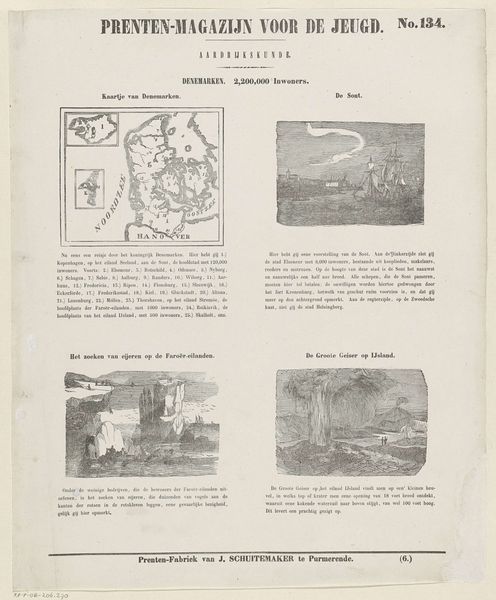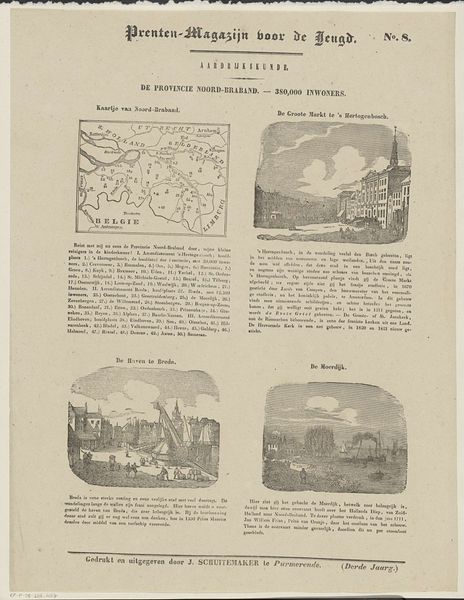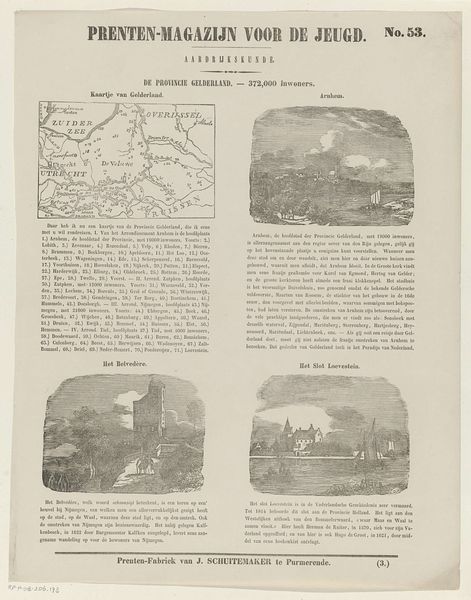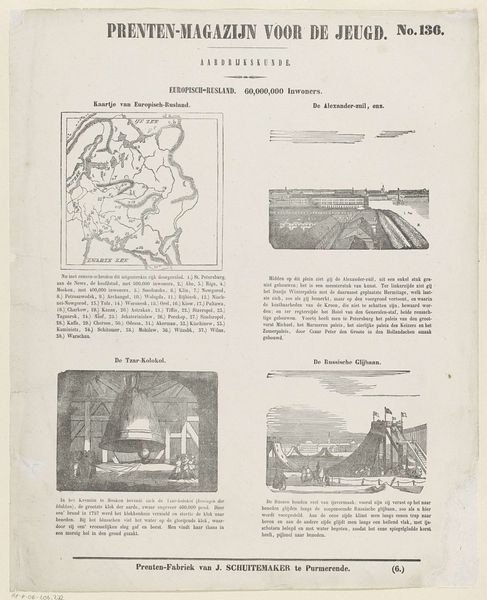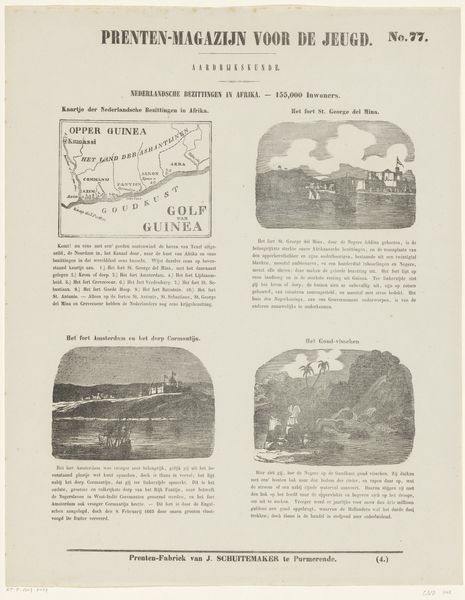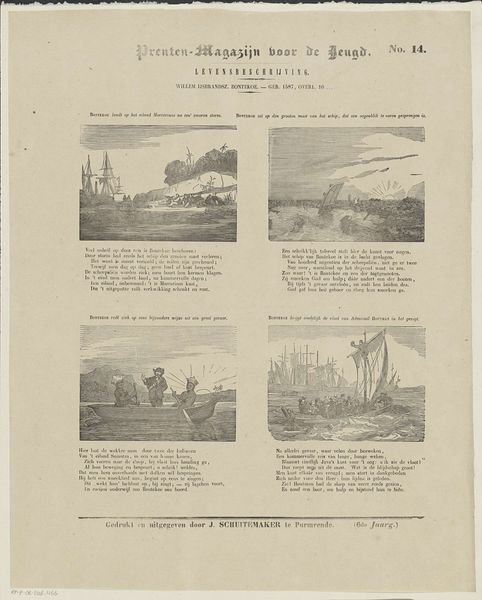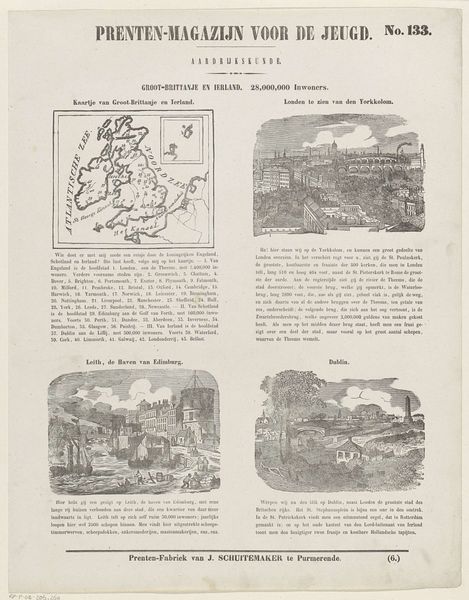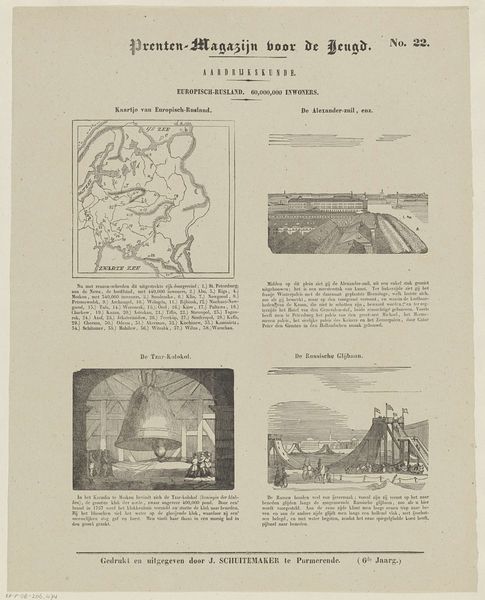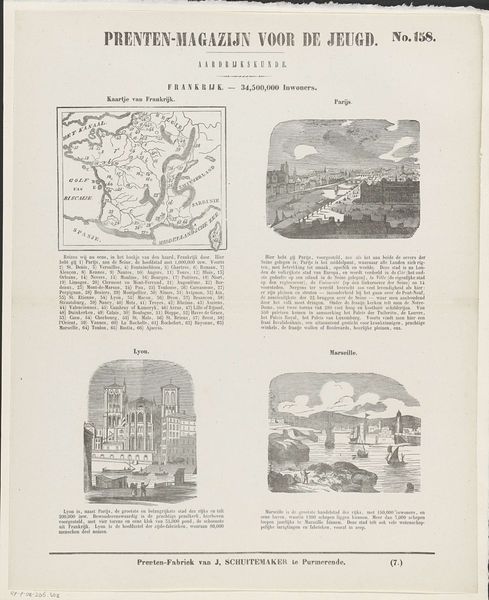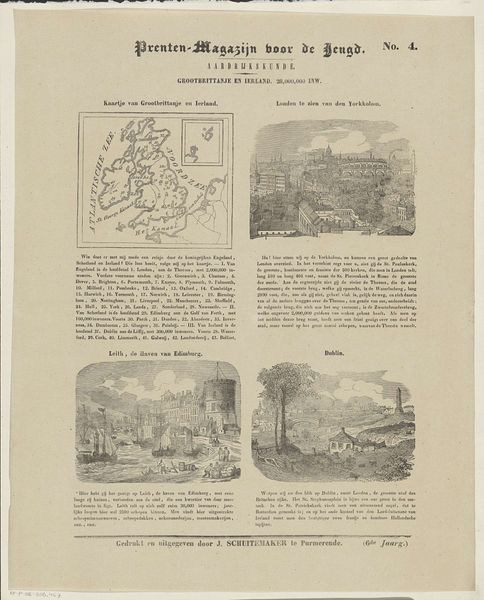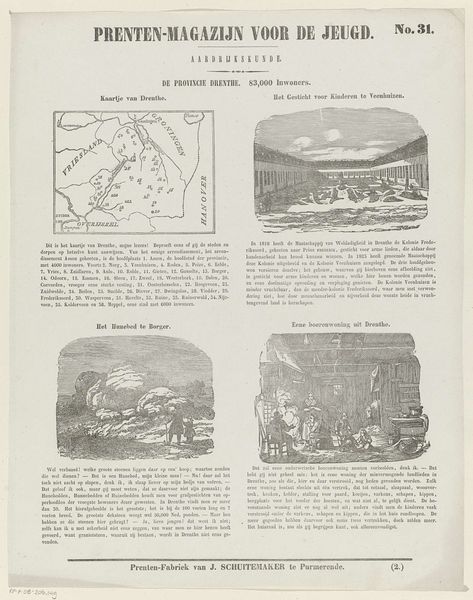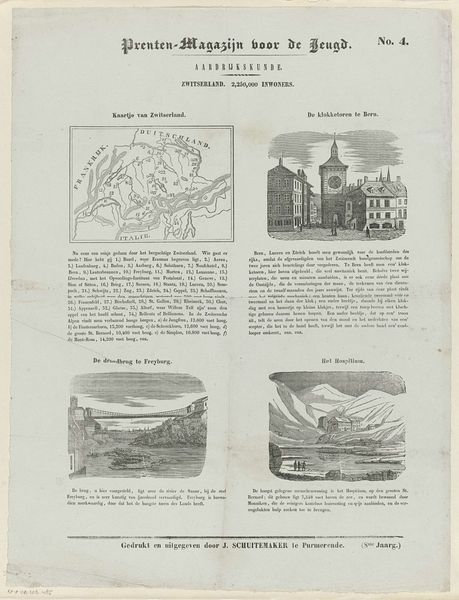
drawing, print, engraving
#
drawing
#
old-fashioned
#
aged paper
#
vintage
# print
#
old engraving style
#
text
#
personal sketchbook
#
journal
#
old-timey
#
word imagery
#
engraving
#
historical font
#
columned text
Dimensions: height 406 mm, width 312 mm
Copyright: Rijks Museum: Open Domain
Curator: This engraving, dating back to 1850, is entitled "Europisch Turkije - 10,000,000 inwoners" created by Jan Schuitemaker. It combines cartography with various illustrative scenes, all presented with explanatory text. Editor: The immediate impression is of something functional yet also visually intriguing. The aged paper and the precision of the engraving technique evoke a sense of history, almost like looking at an early prototype of a modern infographic. Curator: Precisely. Consider the means of its production: engraving, printing, and the distribution intended for educational purposes. We are examining the confluence of artisanal craft, technological innovation, and the commodification of knowledge through print. Editor: Let's contextualize this within mid-19th century Europe. The artwork points to a specific fascination with, and perhaps even a veiled political stance on, the Ottoman Empire—or "Europisch Turkije". The visualization of the population size alongside geographic details situates people within a larger social framework. Curator: Indeed, Schuitemaker's focus extends to representing materials like paper and ink. What was the original stock? Was it locally sourced near his factory, or did it depend on global trade networks? These details mattered economically and impacted the overall accessibility of printed matter to a wider audience. Editor: Absolutely. The map itself is a loaded signifier. Boundaries are being defined, spaces are claimed visually. The focus on '10,000,000 inhabitants' speaks to empire, resources, and demographic control as significant components of the region's characterization. Who gets counted and who is erased from this picture? What biases are present? Curator: Also note the integration of image and text. This challenges traditional hierarchies of "high" art and craft. Typography becomes part of the overall aesthetic and narrative structure. How did this blend impact the dissemination and understanding of the represented information at the time? Editor: Considering today's political discourse around immigration, nationalism, and contested territories, works like this hold up a mirror. They remind us that these anxieties and power dynamics have deep roots and continue to evolve across generations and continents. Curator: By studying its materiality and production, we gain insight into how this printed image once functioned within its society. The methods, skill and access of this "Presten-Fabriek" allowed them to play a unique role. Editor: Agreed, its place within contemporary debates allows for a rich, interdisciplinary investigation bridging art, geography, history, and critical social theory.
Comments
No comments
Be the first to comment and join the conversation on the ultimate creative platform.
